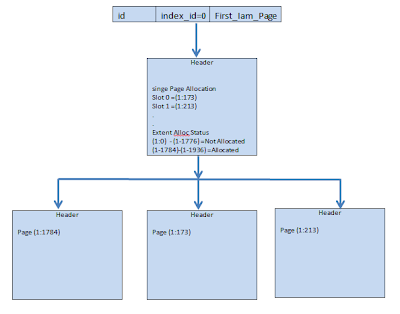Heap Table
- A table which does not have a clustered index.
- Heap table have one row in sys.partitions with index_id =0
- Data is not stored in any particular order. Not in the order of insert also.
- As the data is not stored in any specific order, data can not be retrieved quickly.
- Data pages are not linked to each other.
- To read the data from the data pages, it has to refer back the IAM (Index Allocation Map) pages.
- The first_iam_page column, in the sys.system_internals_allocation_units system view, points to the first IAM page in the chain of IAM pages that manage the space allocated to the heap.
- As there is no clustered index, fragmentation can not be addressed by rebuilding the index.
- SQL server used the IAM pages to navigate through the heap structure. The data pages allocated to the heap are not in any specific order and are not linked. The only logical connection between the the data pages is the information stored in the IAM pages.
To find out the IAM page, use the below command
DBCC IND('databasename','Tablename',-1)
In the output of the above query, record with value 10 for Page Type column are the IAM pages
A typical heap structure is given below
If you liked this post, do like my page on FaceBook at http://www.facebook.com/practicalSqlDba



